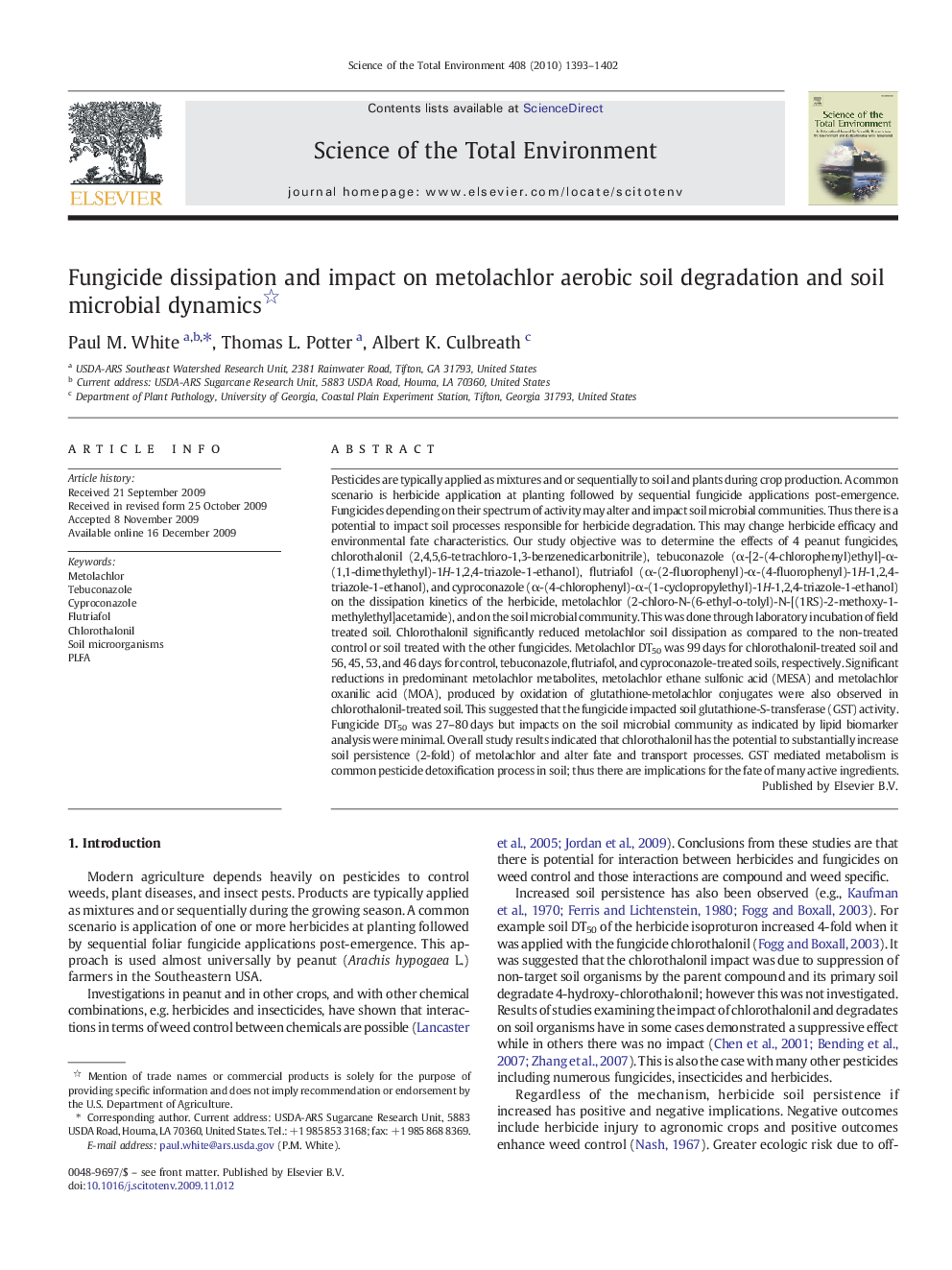| کد مقاله | کد نشریه | سال انتشار | مقاله انگلیسی | نسخه تمام متن |
|---|---|---|---|---|
| 4430585 | 1619880 | 2010 | 10 صفحه PDF | دانلود رایگان |

Pesticides are typically applied as mixtures and or sequentially to soil and plants during crop production. A common scenario is herbicide application at planting followed by sequential fungicide applications post-emergence. Fungicides depending on their spectrum of activity may alter and impact soil microbial communities. Thus there is a potential to impact soil processes responsible for herbicide degradation. This may change herbicide efficacy and environmental fate characteristics. Our study objective was to determine the effects of 4 peanut fungicides, chlorothalonil (2,4,5,6-tetrachloro-1,3-benzenedicarbonitrile), tebuconazole (α-[2-(4-chlorophenyl)ethyl]-α-(1,1-dimethylethyl)-1H-1,2,4-triazole-1-ethanol), flutriafol (α-(2-fluorophenyl)-α-(4-fluorophenyl)-1H-1,2,4-triazole-1-ethanol), and cyproconazole (α-(4-chlorophenyl)-α-(1-cyclopropylethyl)-1H-1,2,4-triazole-1-ethanol) on the dissipation kinetics of the herbicide, metolachlor (2-chloro-N-(6-ethyl-o-tolyl)-N-[(1RS)-2-methoxy-1-methylethyl]acetamide), and on the soil microbial community. This was done through laboratory incubation of field treated soil. Chlorothalonil significantly reduced metolachlor soil dissipation as compared to the non-treated control or soil treated with the other fungicides. Metolachlor DT50 was 99 days for chlorothalonil-treated soil and 56, 45, 53, and 46 days for control, tebuconazole, flutriafol, and cyproconazole-treated soils, respectively. Significant reductions in predominant metolachlor metabolites, metolachlor ethane sulfonic acid (MESA) and metolachlor oxanilic acid (MOA), produced by oxidation of glutathione-metolachlor conjugates were also observed in chlorothalonil-treated soil. This suggested that the fungicide impacted soil glutathione-S-transferase (GST) activity. Fungicide DT50 was 27–80 days but impacts on the soil microbial community as indicated by lipid biomarker analysis were minimal. Overall study results indicated that chlorothalonil has the potential to substantially increase soil persistence (2-fold) of metolachlor and alter fate and transport processes. GST mediated metabolism is common pesticide detoxification process in soil; thus there are implications for the fate of many active ingredients.
Journal: Science of The Total Environment - Volume 408, Issue 6, 15 February 2010, Pages 1393–1402